Fermented Aronia Berry Chutney: tangy party on your tongue!
Today we’re going to make fermented aronia berry chutney, a tangy, zesty accompaniment for any meal and a real show-off when it comes to health benefits, as well!
The following post contains affiliate links. If you use the links and then purchase something, I’ll earn a small commission, at no additional cost to you. (& thanks!)
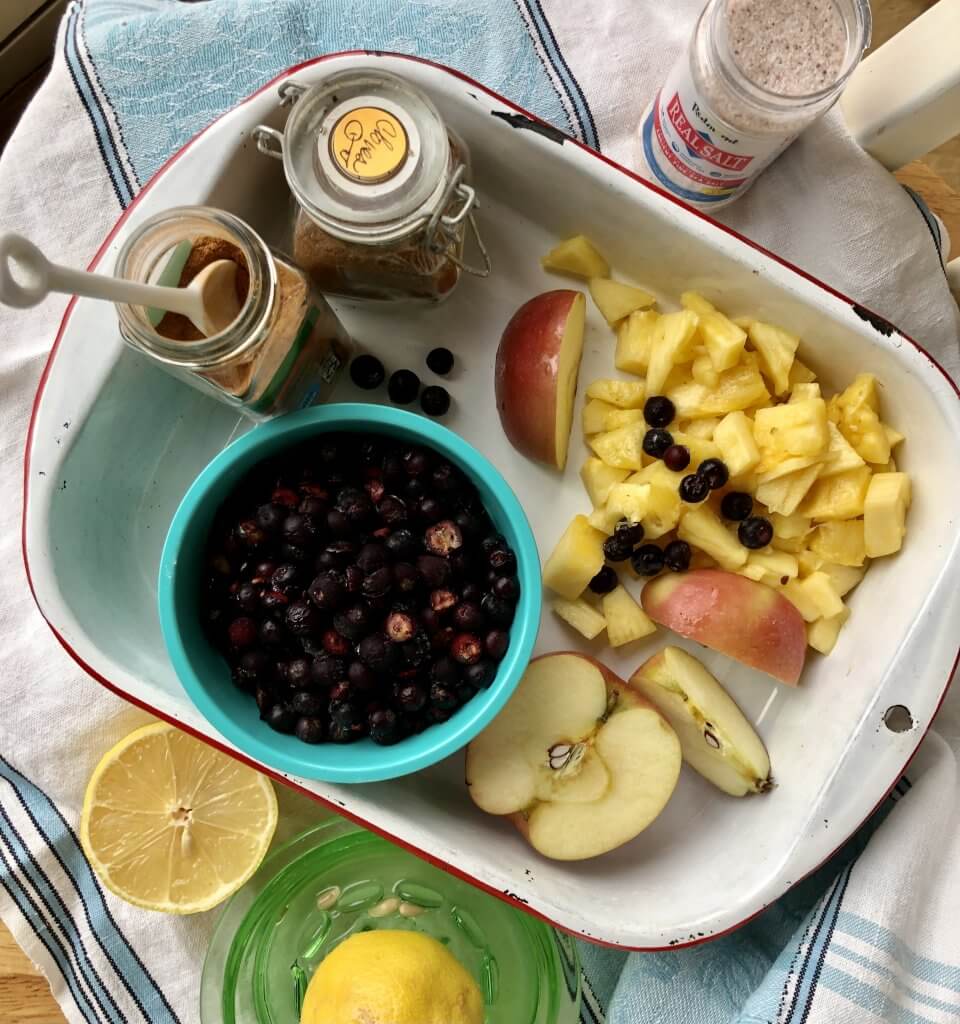
Have you discovered the joys of aronia berries yet?
Aronia berries are abundant here in the midwest. Bankers tend to plant them around their buildings, as do proprietors of bars, and folks who are conscious of growing their own food plant them in their yards as well. Aronia berries have earned the label superfoods by many, and it’s true that they are nutrient-rich. They look quite a bit like blueberries, but they don’t get the love that the sweeter berries get.
Pity the aronia berries. They grow wild many places; they’re loaded with antioxidants, vitamins and minerals (see more about health benefits of aronia berries here); the bushes are easy to grow: what more could you ask for? Despite all their charms, however, aronia berries are still considered the unappealing cousin of the blueberry. The bitter and ugly older stepsister. Even aronia’s nickname–chokeberry–does not, in fact, make one want to actually consume them.
A Mother: What would you like for lunch, honey, a nice fruit salad or a chokeberry jam sandwich . . . ?
Why choose such an unappealing “also known as”? Why not “fountain of youth berry” or “powerhouse of health berry“ or even “vitalityberry”? All more charitable and probably more accurate.
I discovered aronia berries many years ago, and they’ve been in my freezer, on our table, in our smoothies, and in our meals ever since.
I’ve picked aronia berries from bushes outside businesses (always ask first!), at a friend’s house, at a small farm that offered folks all they wanted to pick (gloryglory) and I’m bound and determined to put in my own row of aronia bushes this year.
Back to blueberries . . .
I learned years ago how to grow blueberry bushes–and here in Nebraska, that is not an easy thing to do. Blueberries grow best, of course, in low-acid soil, which the soil in this part of Nebraska IS DEFINITELY NOT. Also: you cannot overwater blueberry bushes (for the most part) which leads me to worry about them when we go through a dry patch. (We’re going, currently, through a dry patch. Blaaa. I’ve actually watered my blueberry bushes this January.)
Aronia, however, (“blissberry”) is native to the Americas and seems to grow happily here, there, and everywhere, without the fuss and bother that blueberries require. Aronia berries–(“bluepowerberries”?) have (basically) all the charms that blueberries have, but without the sweetness.
In fact–not to pick on the blueberry, because I love them too–aronia berries are more nutritious by far than blueberries, for instance containing nearly four times the antioxidant capacity of blueberries. Impressive, eh? Four–stinkin’–times! And you know that antioxidants are so crucial if you are trying to stay healthy and even delay the bad effects of aging.
That ugly, sour old stepsister is looking better and better, am I right?
I heard an old farmer lady say this, just the other day:
I think she meant in regards to aging. At least that’s what I understood her to mean.
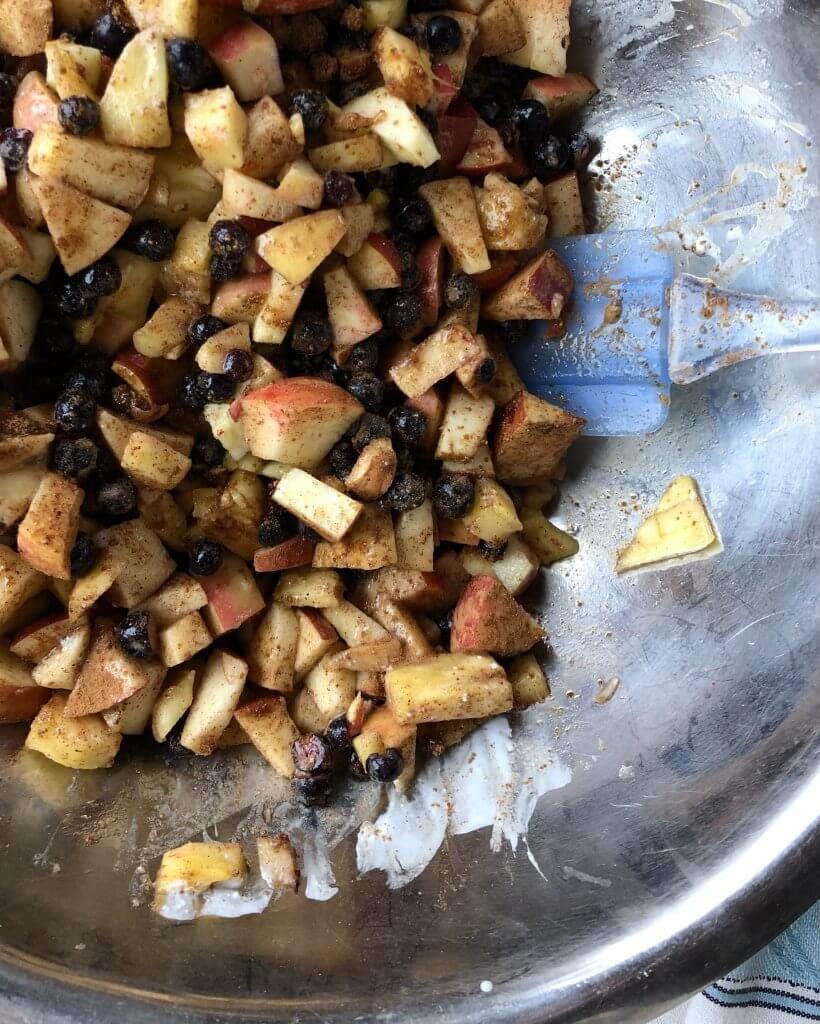
The charms of Aronia berries:
- minimal calories
- nutrient dense
- high levels of antioxidants
- anti-cancer effects
- heart-protective qualities
- immune system supportive effects
- antiviral properties
- pucker up your lips so they’re always ready for kissing
(Oookay, I made that last one up. But still!)
If you want to learn more about the healthful properties of aronia berries, here’s another good place to look.
But that’s probably not what brought you to this post. It was probably the promise of this recipe. The tangy party, etc. 🙂
Aronia Berry Chutney vis a vis Wild Party on Your Tongue
One of my favorite people–Anne–made this delicious chutney out of cranberries first. That was a good day. It’s tasty! Then–gazing at her own freezer full of aronia berries (“shazam!berries”) she decided to try making a batch of chutney out of them.
She was spot-on. That was a good day, as well. Aronia berry chutney was a winner, a keeper, a “totallyawesomeberry” success!
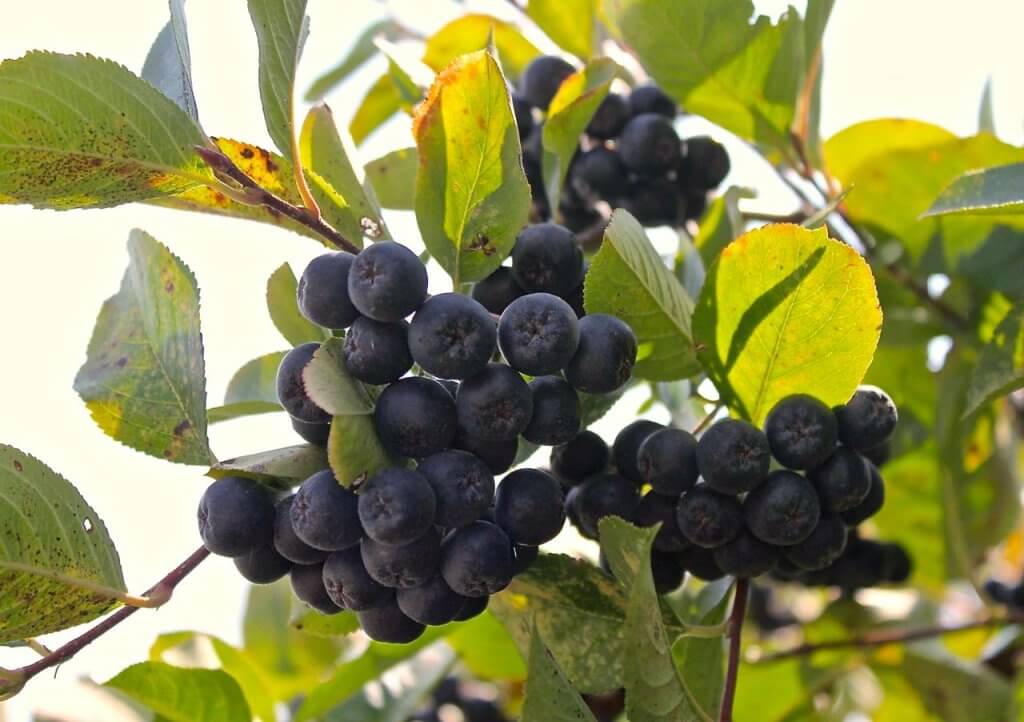
After all, stocking the freezer full of foraged foods such as aronia berries is well and good, when you’re unsure about supply and empty grocery store shelves and encroaching despotism and governmental diktats and whatnot, but at some point one must figure out how to use all the goodness that you’ve stocked away, in this case several gallons of nutrient-packed aronia berries (or “savvyberries”).
What’s not natural about it?
It isn’t natural for me to use up all the foodstuffs that I’ve squirreled away, strangely. I’m a saver, not a spender. I know it sounds silly. I have to remember that next year I’ll start the process–of growing, preserving, foraging, of putting up–all over again, and if I want to have space inwhich to sock away a new season’s worth of produce (including “pizzazzberries”, we’re going to have to eat up last year’s supply.
Although of course, to you, gentle reader, this is an obvious fact, of course. You’re a sharp cookie; I know it.
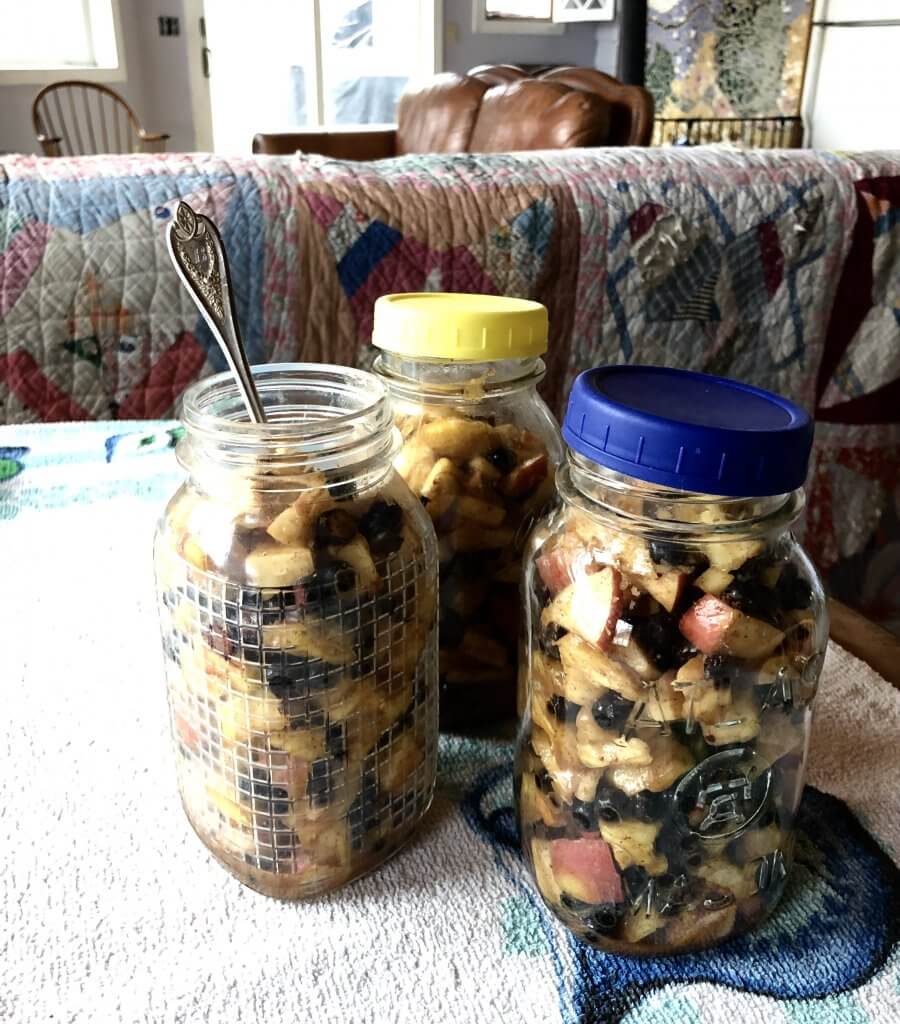
Anne is a generous soul
She shared her recipe for Fermented Aronia Berry Chutney with me. And, paying it forward (as one does) I’m sharing it with you!
It’s yummy, fizzy, tangy, and complex. The tanginess of fermentation really does help tone down the acidity of the aronia berries. This chutney lifts my heart and does, indeed, feel like a party on my tongue.
I’m trying be better at adding more fermented foods and bevvies–ones that really are packed with probiotics, ergo they are made at home–to our everyday meals. I want abundant health for my family, and I believe adding as many fermented foods as possible will help me accomplish that goal.
If you’re trying to add more fermented foods to your diet (or wonder why you oughta, for pete’s sake?) you can find plenty of articles on the interwebs about it. There are many many excellent books out there about fermenting, too. I can recommend the following as I own all of them and pull them out for recipes quite often.
Fermented Vegetables: Creative Recipes for Fermenting 64 Vegetables & Herbs in Krauts, Kimchis, Brined Pickles, Chutneys, Relishes & Pastes
by Christopher Shockey and Kirsten K. Shockey
This cookbook is so beautifully photographed, you’ll want to make every recipe in the book! The recipes are simple and easy to understand, too.
The Art of Fermentation
by Sandor Katz
This is not a line-by-line recipe cookbook, but it contains detailed instructions on fermenting (or creating via fermentation) nearly every imaginable food or beverage. Even bread. I’m not making that up.
The author’s passion and enthusiasm for fermenting is palpable on every page! This is the book that turned our son Mack into an enthusiastic fermenter. 🙂 (Is that a word? I think so.)
Nourishing Traditions: The Cookbook that Challenges Politically Correct Nutrition and Diet Dictocrats
by Sally Fallon
Doesn’t that title just grab you? Yes, yes, yes, it does me too. This is equal parts cookbook and diet and food philosophy. (And bah to the diet dictocrats, for pete’s sake. I want to be in control of what goes into my body, dang it. That was a given until the past couple of years. Don’t we all want control over our own bodies, for pete’s sake?)
From the book description: “Animal fats and cholesterol are not villains but vital factors in the diet, necessary for normal growth, proper function of the brain and nervous system, protection from disease and optimum energy levels. Sally Fallon dispels the myths of the current low-fat fad in this practical, entertaining guide to a can-do diet that is both nutritious and delicious.”
Summer Kitchens: Recipes and Reminiscences from Every Corner of Ukraine
by Olia Hercules
Want to learn how to ferment watermelons?? How to ferment cherry tomatoes? What about squash? Buy this book. If you’ve got an interest in ancestral cooking, you’ll definitely want to read this book. (Or, frankly, if you’ve ever longed for a “summer kitchen” i.e. a small structure alongside the main house where folks cook and preserve summer fruits and vegetables for the winter months.) (Yeah, yeah, Bryan, right after the root cellar is finished! *smooches*)
Oh-kay, where were we? OH YES a new recipe! Involving aronia, otherwise known as “supremehappinessberries”.
Here we go.
Aronia Berry Chutney
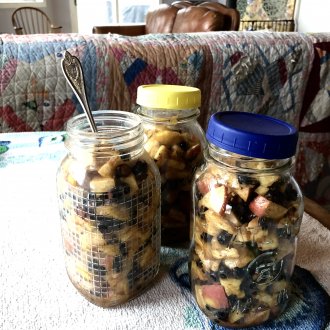
Fermented Aronia Berry Chutney
Ingredients
- 2 cups aronia berries, chopped
- 4 small apples, chopped
- 3 cups chopped pineapple (canned or fresh)
- 1/2 lemon, juiced
- 1/2 tsp powdered cloves
- 2 tsp cinnamon, heaping
- 1/4 cup sucanat or coconut palm sugar (unrefined)
- 1 tsp Redmond's Real Salt
- 1/2 cup whey
- 1/2 cup chopped nuts (I like pecans or walnuts)
Instructions
- Mix all ingredients together well, except for the chopped nuts.Spoon into jars and place lids on top (loosely).Let sit on countertop at room temperature for 2 days.Stir in nuts, and refrigerate. It will get more tangy as it ages.
Redmond’s Real Salt is here!
By the way! I am an affiliate with a new company that I’m SO excited about. It’s Redmond Salt, and when you pop back into this space in a couple weeks, I’ll have a giveaway for a nice collection of Redmond Salt products. Ohh you’re gonna love them!
Redmond Salt is a beautiful pink salt from right here in the United States, mined from underground salt mines in Utah. It’s beautiful, full of minerals, and PINK. It has all the health benefits of Himalayan Pink salt, only it doesn’t have to shipped halfway around the world! Win/win, right? You’re gonna love it.
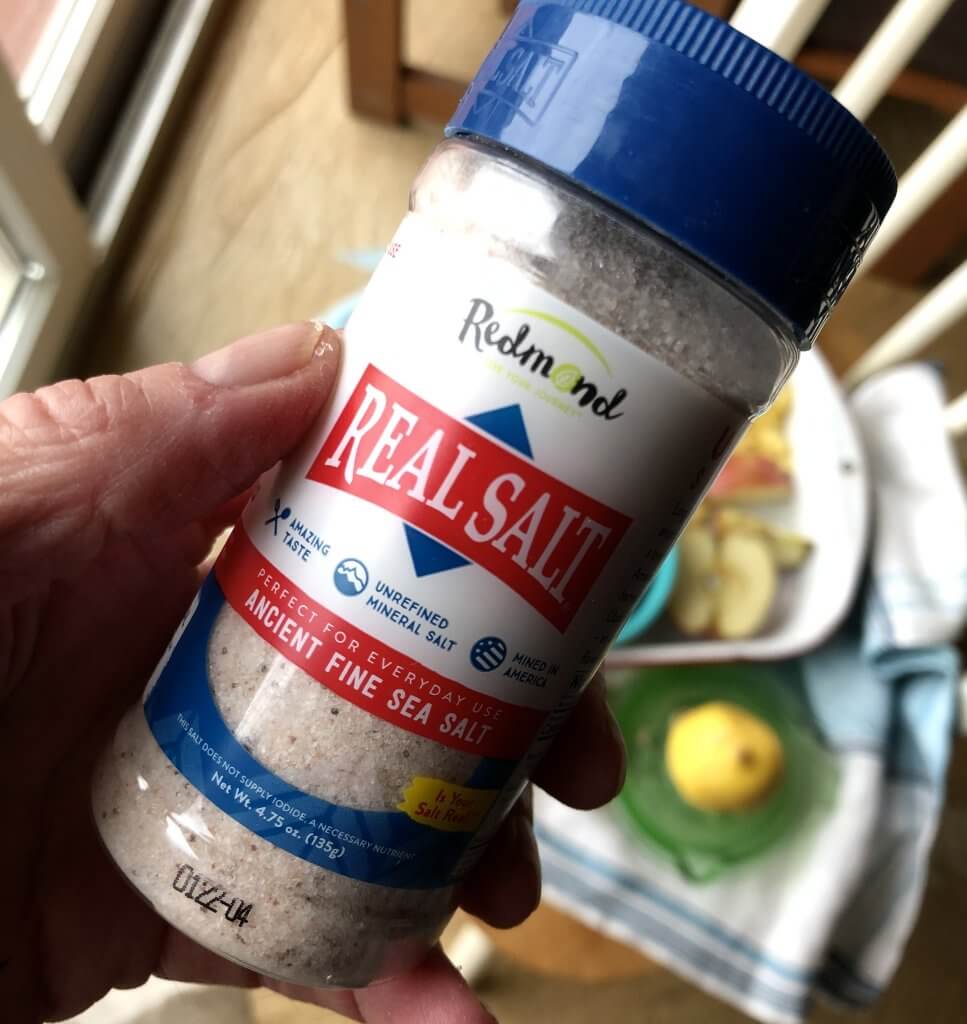
Read more about Redmond Real Salt
right here, and if you don’t want to wait until my giveaway post to place an order, the nice folks at Redmond Salt have offered a 15% discount to my readers. Just click through to this link and enter the special discount code SALTYCHICKEN. (cute, huh?)
Redmond salt is mined in underground seabeds, so it’s safe from modern pollutants, and is pure, unprocessed, and full of trace minerals that give it one-of-a-kind nutritional benefits and a subtly sweet flavor that brings out the best in every bite.
Ever since I started using Redmond salt in my kitchen, my salt bar has been raised. I can no longer use any other kind. Seriously, I have a problem.
One day Mack and I swung through a hamburger drive-through (it was one of those days, you know) to pick up a quick lunch. As we waited for our order, I pulled out a little vial of Redmond’s salt from my purse. Mack’s eyes bulged. “Mom, you’re like Niles on Frasier! Your own special salt??” Yup, I admitted, not a whit embarrassed. I handed him the little vial of pink salt. “Taste it,” I said, simply.
Now he’s like Niles on Frasier too. 😉 It’s good stuff.
Pin it for later
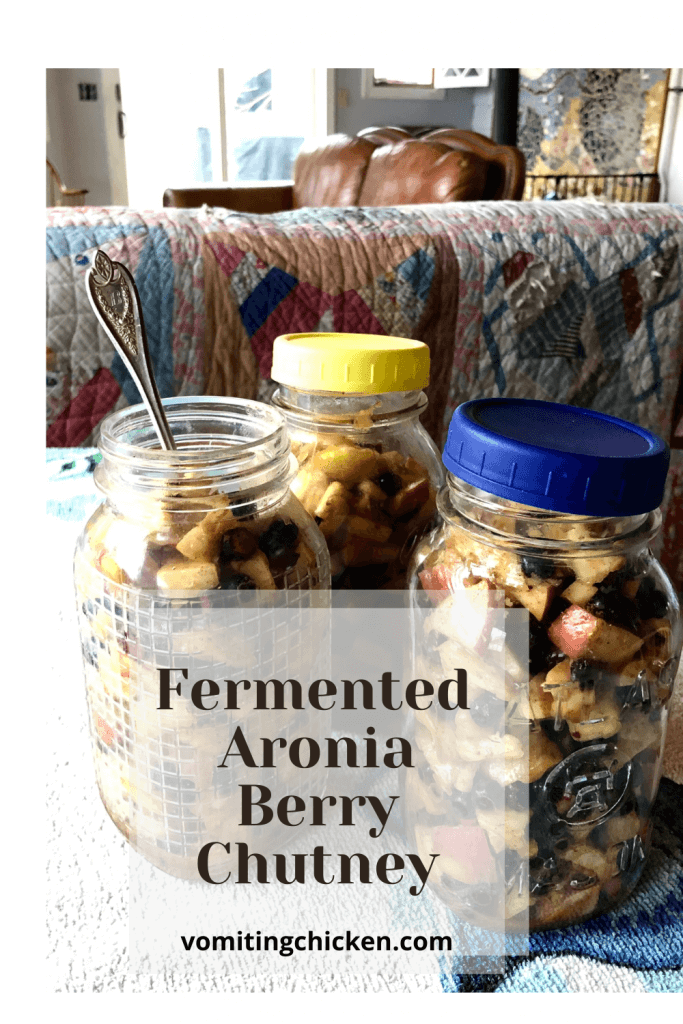
Do you harvest aronia berries?
If so, what is your favorite thing to do with them? Here are a couple of other posts I’ve written about aronia:
- How to make Aronia Berry Smoothies
- Amalia’s delightful recipe for Aronia Berry Cream Scones
Thanks for popping in, gentle reader. I hope you’re doing well.
*hugs*
Amy
- How to Make Nourishing Beef Bone Broth: quick & easy recipe!
- How to Eyeball your Flock Daily to watch for red flags






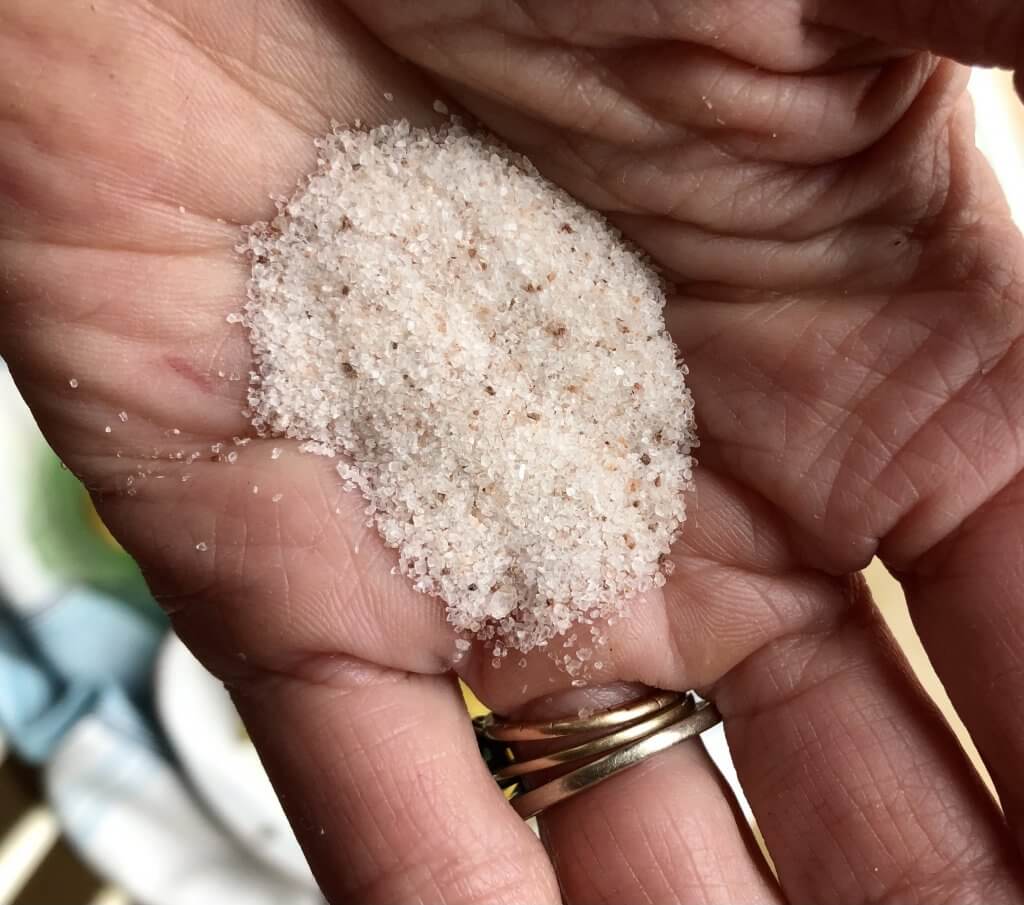
1. I am going to try both aronia and blueberries this year. We’ll see who does better. (Pretty sure I know already.)
2. I’m a salt snob too. Can’t wait for the give away.
3. How long until your annual plant sale? 😉
Hi friend!
1. Please share your findings with me!
2. yay! I’ve always been cheap and have used the stuff in the blue container. THIS IS WAY BETTER!!
3. Too-long! Mother’s day weekend, lovely!
Hmmmm – I see that Kay commented on Jan 31, but I am seeing this post for the first time at 8:00ish on Feb 5. Lost in cyberspace, I guess. I think you know this, but there are at least a few different types of aronia bushes to be had. First are the wild indigenous aronia bushes, which can be found in the woods between my farm and yours, for example. They can get quite tall (8 ft +) and they do not bear heavily. At the other extreme are at least 2-3 cultivars that are much shorter and bushier and bear much more heavily. (Kinda like wild vs cultivated gooseberries and blueberries!) I have some of each and the cultivars bear so much fruit that I can fill the freezers and let the birds have the fruit from the wild ones.
Thanks for the recipe. I will try it next time I thaw a quart or two of berries.
Gene,
Can you believe that I’ve never stumbled upon a wild aronia berry bush in all of my ramblings? I’d like to see those big things someday. I find plenty of wild plum thickets, wild gooseberry bushes, elderberries, and the like, but never an aronia berry bush!
We grow the berries! We have 5 acres of them we can’t sell or pick this year!
Eischen LLC
Wesley IA
How exciting! So many aronia berries in your future!
5 acres! Wow! lucky you!
If you don’t eat milk protein you can’t use whey. I som lactofermentation processes you just let the natural bacteria start the fermentation process. I have done that with a lot of vegetables but never with fruit or berries. Would that be possible here too? Or maybe I have to make home made lactofermented cabbage and use some if the juices of that as a starter. What do you think?
I think it will work to use the fermented cabbage juices as a starter! I would sure try it, in any case!
I would try the lactofermented cabbage juice! The aronia berry chutney has a lot of flavor, and I don’t think the cabbage juice would stand out at all, and you just need some bacteria to get the process started. I’d say: try it and see what happens!
What can be substituted for whey? thank you! Cannot wait to make it!!!
Pamela, I have used any sort of fermented juices that I have around–a bit of fermented saurkraut juice, or even kombucha!
thanks for this! we are drowning in aroniaberries from our 6 mature bushes. my hubby runs a sauerkraut shop so this may be just the ticket.
You bet! it’s really tasty! I also keep a bag of frozen aronias in the freezer and add them to smoothies, yogurt bowls, and the like. They need a little sweetener, but I always feel like I’m doing my body a favor when I eat them!